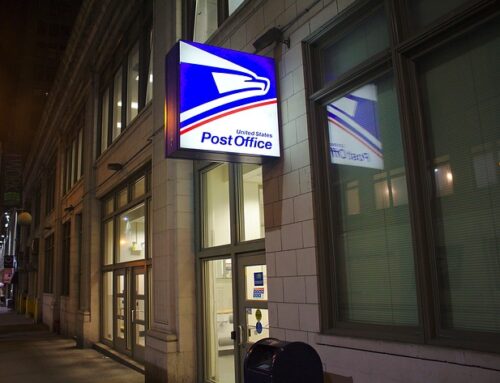Printing & Mailing Glossary
Don’t Let Industry Jargon Leave You Lost
Welcome to the comprehensive glossary of terms for the printing and mailing industry. In this guide, we have compiled a wide range of terms that B2B customers should be familiar with to navigate the world of printing and mailing services effectively. Whether you are seeking a reliable provider for your business’s bill and statement printing or exploring direct mail campaigns, understanding these terms will empower you to make informed decisions and communicate effectively with service providers.
The glossary covers a diverse array of terms, ranging from essential industry concepts to specific techniques and services. You will find explanations of key terms related to printing processes, mailing requirements, postal regulations, and more. Each entry provides a concise yet informative description to ensure clarity and comprehension.
Glossary of Printing and Mailing Terms
Address Verification: The process of validating and correcting addresses to ensure accuracy and improve mail deliverability.
Barcoding: The process of adding machine-readable barcodes to mail-pieces, such as Intelligent Mail Barcode (IMb) or Postal Numeric Encoding Technique (POSTNET) codes, to facilitate automated sorting and tracking.
Bleed: The area of a printed document that extends beyond the final trimmed size, allowing for color or images to reach the edge of the paper.
Bulk Mail: A discounted postage rate offered by postal services for large volumes of identical mail-pieces that are presorted, barcoded, and processed in accordance with specific guidelines.
Bulk Mailing Permit: A permit issued by the postal service that allows businesses to send bulk mailings at discounted rates, provided specific mailing requirements are met.
Business Reply Mail (BRM): A service offered by the postal service that allows businesses to provide pre-paid reply envelopes or cards for customers to respond without incurring postage costs.
Carrier Route: A specific geographic area or route assigned to a postal carrier for mail delivery, typically used for targeted direct mail campaigns to reach specific neighborhoods or demographics.
CASS Certification: Coding Accuracy Support System (CASS) certification is a standardization process for address verification by the United States Postal Service (USPS) to ensure accuracy and qualify for bulk mail discounts.
Collating: The process of arranging printed sheets or documents in a specific order, such as assembling multiple pages of a booklet or organizing sets of documents for mailing.
Data Processing: The handling and manipulation of data to prepare it for printing and mailing, including data cleansing, deduplication, sorting, and personalization.
Delivery Point Barcode (DPBC): A barcode used to represent the specific delivery point of a mail-piece, providing enhanced accuracy and routing information for efficient mail processing.
Digital Printing: A printing method that directly transfers digital files to the printing press, enabling efficient and cost-effective production of small to medium print runs with variable data capabilities.
Direct Mail: A marketing strategy that involves sending promotional materials, such as brochures, flyers, or postcards, directly to a targeted audience through the mail to generate leads or sales.
EDDM (Every Door Direct Mail): A service provided by the postal service that allows businesses to target specific geographic areas for their direct mail campaigns without requiring a specific recipient address.
Document Composition: The process of assembling and formatting text, images, and data elements into a cohesive document layout for printing and mailing.
Envelope Insertion: The mechanical process of inserting printed documents, such as bills or statements, into envelopes for mailing.
First-Class Mail: A category of mail service offered by USPS that provides fast and reliable delivery for letters, postcards, and small packages, typically at a higher postage rate than bulk mail options.
Folding and Inserting: The process of mechanically folding printed documents and inserting them into envelopes, often automated for high-volume mailings.
Indicia: A printed mark or indicia on a mail-piece that indicates prepayment of postage, typically replacing a physical stamp.
Inkjet Printing: A printing method that uses inkjet technology to create images or text by propelling droplets of ink onto the printing surface, suitable for variable data printing and short to medium print runs.
Inserting Control Number: A unique identifier added to each mailpiece during the insertion process, allowing for tracking and verification of accurate insertion and ensuring all intended pieces are included.
Inserting Equipment: Machines specifically designed for automated folding, inserting, and sealing of documents into envelopes, reducing manual labor and improving efficiency for high-volume mailings.
Intelligent Mail Barcode (IMb): A barcode used by USPS for tracking and routing mail-pieces, providing greater visibility and accuracy throughout the mailing process.
Mail Class: The category or service level of mail being sent, such as First-Class Mail, Standard Mail (now called Marketing Mail), Priority Mail, or Express Mail, each offering different delivery standards and pricing.
Mail Merge: The process of combining a database of recipient information with a document template to create personalized letters, envelopes, or labels.
NCOA (National Change of Address): A USPS service that matches mailing addresses against the most current change-of-address information, allowing businesses to update customer databases with new addresses for improved mail deliverability.
Offset Printing: A traditional printing method that transfers ink from a plate to a rubber blanket and then onto the printing surface, suitable for large print runs with consistent image quality.
Optical Character Recognition (OCR): Technology that converts printed or handwritten text into digital characters, allowing for automated processing and extraction of data from scanned documents.
Personalization: The customization of printed materials with variable data, such as recipient names, addresses, or personalized messaging, to create more targeted and personalized communications.
Postage Optimization: The strategic process of maximizing postage discounts by presorting and preparing mailings in accordance with USPS requirements to qualify for the most cost-effective postage rates.
Postal Automation: The use of automated systems, such as sorting machines, barcode readers, and address recognition software, to streamline the processing and sorting of mail-pieces for efficient delivery.
Prepress: The preparation and processing of digital files before they are sent to the printing press, including tasks such as color management, image retouching, and file optimization.
Presort: The process of organizing mail-pieces by ZIP code or other criteria before presenting them to the postal service, enabling faster and more cost-effective mail processing and delivery.
Proof of Delivery (POD): Documentation or confirmation that a mail-piece has been successfully delivered, often provided through electronic records, delivery receipts, or tracking information.
Proof of Mailing: A document or receipt provided by the postal service or printing and mailing provider as evidence that the mail-piece has been accepted for delivery.
Proofing: The process of reviewing and approving a printed proof or digital proof of a document before it goes into full production, ensuring accuracy, layout, and color consistency.
Remittance Envelopes: Envelopes specifically designed with a detachable portion for customers to include payments or responses, commonly used for billing or donation purposes.
Return Mail Management: The process of handling undeliverable mail, including updating customer databases with new addresses, removing invalid entries, and analyzing reasons for non-delivery to improve future mailings.
USPS: United States Postal Service, the government agency responsible for mail delivery and postal services in the United States.
Variable Color Printing: The capability of a printing system to produce full-color documents with variable elements, allowing for personalized color graphics, text, or images to be incorporated into each printed piece.
Variable Data Printing (VDP): A printing technique that allows for the customization of text, images, and other content on each printed piece, enabling personalized and targeted communications.
Variable Imaging: The process of incorporating personalized images or graphics into printed materials based on recipient-specific data, enhancing the level of personalization and engagement.
Web-to-Print: An online printing system that allows customers to submit and manage print orders through a web-based interface, streamlining the ordering process and enabling customization options.
ZIP Code: A numerical code used by USPS to identify specific geographic areas for efficient mail sorting and delivery.




